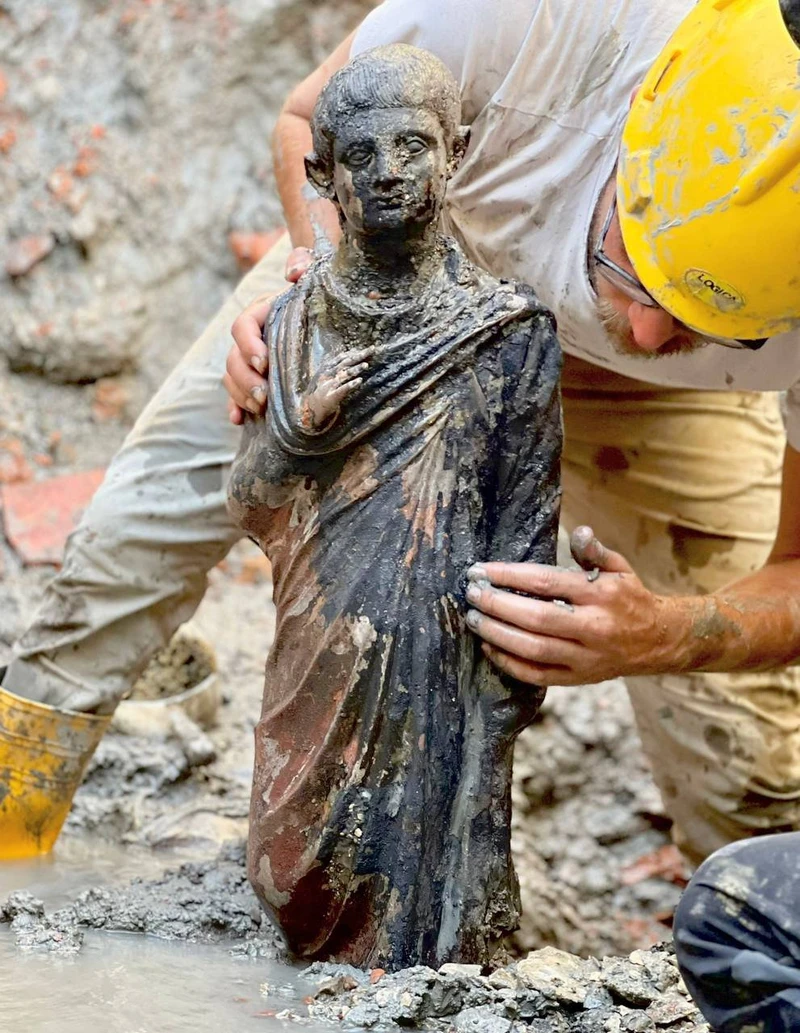Italian archaeologists have uncovered 24 ancient bronze statues in excellent condition in the Tuscany region, dating back about 2,300 years. In addition to the statues, researchers also discovered 6,000 gold, silver, and bronze coins. The artifacts were submerged in an ancient thermal spring. They were likely used in religious cults.
Archaeologists have been excavating in the commune of San Casciano dei Bagni for several years, on top of a hill in the province of Siena, where hot springs and baths have been located since ancient times.
The new findings belong to the era of great transformations in ancient Tuscany. Between the 2nd century BC and the 1st century AD, Etruscan rule in the region was replaced by Roman governance, the publication reported. Designboom .

What did the researchers see?
Among the masterpieces of ancient art discovered in the sanctuary are life-sized figures and busts of gods and goddesses (including Apollo and Hygieia), as well as, presumably, local residents and their children. Alongside the statues, researchers found sculptural representations of human organs and body parts. It is likely that the sick brought anatomical artifacts to the sanctuary and immersed them in water, hoping for recovery.
By the way, the Roman Emperor Octavian Augustus and the poet Horace were healed in these miraculous springs.
The richly detailed statues have been so well preserved in the hot water that even today one can discern the names of the powerful families of this region. Alongside inscriptions in Etruscan, Latin inscriptions were also discovered. Their authors mention the local thermal springs, where the statues waited for archaeologists for many centuries.

Are these statues really that valuable?
According to experts, the statues are the most significant bronze finds in Italy since 1972. That was when underwater archaeologists raised from the seabed off the coast of Calabria the so-called “warriors of Riace.” These two bronze statues of naked bearded men date back to the second quarter of the 5th century BC.
As for the November finds, they have also been called one of the most significant bronze artifacts of the ancient Mediterranean ever discovered by researchers.
The Italian Ministry of Culture stated that the findings will “rewrite history” and provide a new perspective on the religious cults of the Etruscans and Romans. According to the head of the excavation, Etruscologist Professor Giacopo Tabolli, over 60 experts from around the world have joined in the study of the artifacts. Tabolli assured that such a large number of ancient bronze statues has never been found in the country at the same time.

What future awaits the artifacts from Siena?
The statues were retrieved from the hot, murky waters where they had been preserved for over two thousand years and transported to a restoration laboratory in the nearby city of Grosseto. After restoration, the artifacts will be displayed in the museum of San Casciano dei Bagni. An archaeological park will be opened nearby.
According to officials, these tourist attractions will attract travelers from all over the world and positively impact the development of the region. In turn, it will become an excellent research site for young archaeologists from various countries who will work here year-round.
Photo:Courtesy of the Italian Ministry of Culture
